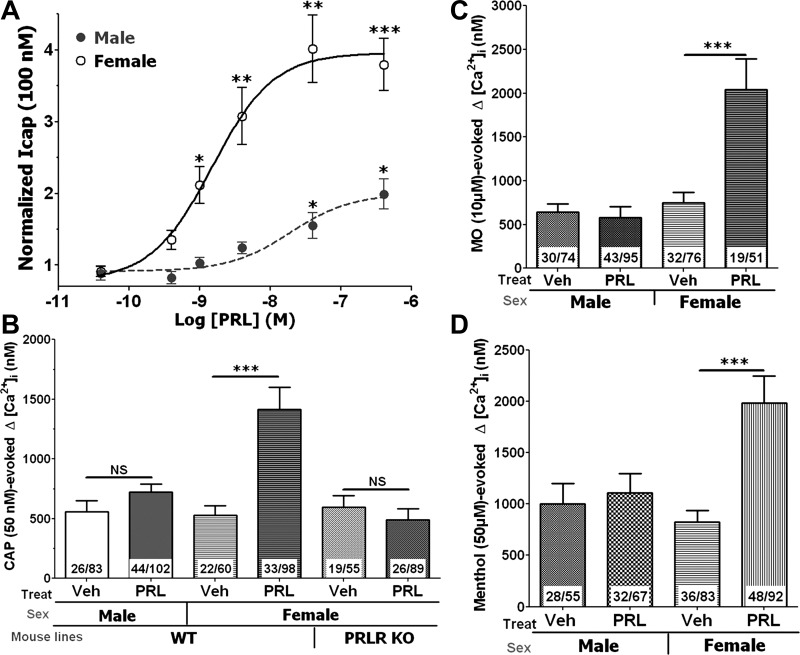Fig. 1.
Regulation of transient receptor potential (TRP) V1, TRPA1, and TRPM8 by prolactin (PRL) in sensory neurons of female and male mice. Cells were pretreated by PRL for 20 min in all described experiments. A: concentration-response curve for PRL-induced sensitization of capsaicin (100 nM)-gated current (ICAP) in sensory neurons of wild-type (WT) female and male mice. Statistical significance was measured comparing ICAP from treatment groups with ICAP in vehicle (Veh)-treated sensory neurons (1-way ANOVA; *P < 0.05, **P < 0.01, and ***P < 0.001; n = 8–12 mice). B: regulation of capsaicin (50 nM)-evoked intracellular Ca2+ ([Ca2+]i) accumulation in sensory neurons of WT female and male mice as well as PRL receptor (PRL-R) knockout (KO) female mice (unpaired t-test; ***P < 0.001). NS, not significant. No. analyzed and capsaicin (CAP)-responsive cells are indicated within bars. C: regulation of mustard oil (MO; 10 μM)-evoked [Ca2+]i accumulation in sensory neurons of WT female and male mice (unpaired t-test; ***P < 0.001). No. analyzed and mustard oil-responsive cells are indicated within bars. PRLR, prolactin receptor. D: regulation of menthol (50 μM)-evoked [Ca2+]i accumulation in sensory neurons of TRPA1 KO female and male mice (unpaired t-test; ***P < 0.001). No. analyzed and menthol-responsive cells are indicated within bars. Mouse lines and sex are indicated below x-axis on B, C, and D.

